Miniart 1/35 German Tank Riders Set 1 w/t Resin Heads # 53022
This kit features four detailed figures of German tank riders, complete with resin heads and weapons.
- High-Quality Parts: Precise plastic parts for realistic figures.
- Resin Heads: Enhanced detail for lifelike expressions.
- Weapons Included: Authentic weapon models for each figure.
 Spread the cost with Paypal Credit
0% for 24 months available on orders over £199
Spread the cost with Paypal Credit
0% for 24 months available on orders over £199
 Spread the cost with Klarna
0% for 24 months available on orders over £199
Spread the cost with Klarna
0% for 24 months available on orders over £199
![]()
German tank riders were infantry soldiers who rode alongside tanks during World War II to provide additional support and enhance the operational effectiveness of armored units.
This tactic, often referred to as “tank riding,” allowed infantry to keep pace with armored vehicles, engaging enemy targets and securing areas that tanks could not easily access.
Role and Purpose:
Tactical Support: Tank riders were used to accompany tanks on the battlefield, particularly during advances and assaults. Their primary role was to protect the tanks from enemy infantry and anti-tank weapons, and to help clear obstacles and secure captured positions.
Close Combat: In close combat situations, tank riders could dismount to engage enemy forces with small arms and grenades, clearing enemy positions and providing a screen for the tanks.
Equipment and Gear:
Uniforms: Tank riders wore standard German Wehrmacht uniforms, including field grey tunics and trousers, steel helmets (pickelhaube or M35 helmets), and leather or fabric boots. They were often equipped with the same gear as other infantry, such as ammunition pouches, bayonets, and canteens.
Weapons: Typical armament included Karabiner 98k rifles, MG 34 or MG 42 machine guns, and various grenades. In some cases, they might carry Panzerfausts or other anti-tank weapons to provide additional support against enemy armor.
Transport: Tank riders were transported on the exterior of tanks, often riding on the hull or turret. This arrangement was somewhat precarious and exposed them to enemy fire, but it allowed them to quickly dismount and engage the enemy when needed.
Tactics and Operations:
Integration with Tanks: The integration of tank riders with armored units required coordination and communication. Riders needed to dismount quickly and effectively when tanks halted or engaged in combat. They also had to be prepared to quickly remount and move with the tanks as they advanced.
Operational Use: Tank riders were used in various operations, including breakthroughs, assaults on fortified positions, and mopping-up operations. They provided essential support during rapid advances and in urban or rugged terrain where tanks alone could not effectively operate.
Challenges and Risks:
Exposure: Riding on tanks exposed soldiers to significant risks, including shrapnel, enemy fire, and environmental hazards such as extreme weather. The open nature of their position made them vulnerable to attack, particularly from enemy aircraft and artillery.
Coordination: Effective coordination between tank crews and riders was crucial for the success of tank-riding tactics. Miscommunication or lack of synchronization could lead to operational inefficiencies and increased risk.
Legacy and Impact:
Operational Effectiveness: Tank riders provided valuable support and enhanced the effectiveness of German armored units, particularly in the early years of the war. Their presence allowed tanks to maintain momentum and increased the versatility of armored operations.
Post-War Reflection: After World War II, the concept of tank riding fell out of favor as armored warfare evolved and new tactics and technologies were developed. However, the role of tank riders remains a notable aspect of World War II combat, demonstrating the integration of infantry and armor in military strategy.
Historical Context:
Development: The use of tank riders was influenced by the need for combined arms tactics, where infantry and armor worked together to achieve tactical and strategic objectives. This approach was part of the broader doctrine of Blitzkrieg, emphasizing speed and coordination.
| SKU | MIN53022 |
|---|---|
| Manufacturer | MiniArt |
| Scale | 1/35 |
| EAN | 5905937497808 |
| Short Description | This kit features four detailed figures of German tank riders, complete with resin heads and weapons.
|
-
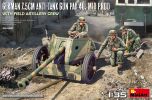 Miniart 1/35 German 7.5cm PaK 40 Mid w/ Artillery Crew # 35400Special Price £26.99 was £29.99 Save 10%
Miniart 1/35 German 7.5cm PaK 40 Mid w/ Artillery Crew # 35400Special Price £26.99 was £29.99 Save 10% -
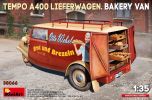 MiniArt 1/35 Tempo A400 Lieferwagen, Bakery Van # 38066Special Price £38.69 was £42.99 Save 10%
MiniArt 1/35 Tempo A400 Lieferwagen, Bakery Van # 38066Special Price £38.69 was £42.99 Save 10% -
 MiniArt 1/35 Iraqi T-55 Al Faw/Enigma Soviet Made Base # 37095Special Price £67.49 was £74.99 Save 10%
MiniArt 1/35 Iraqi T-55 Al Faw/Enigma Soviet Made Base # 37095Special Price £67.49 was £74.99 Save 10% -
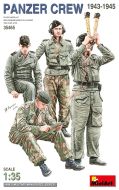 MiniArt 1/35 Panzer Crew 1943-1945 # 35465Special Price £12.59 was £13.99 Save 10%
MiniArt 1/35 Panzer Crew 1943-1945 # 35465Special Price £12.59 was £13.99 Save 10% -
 MiniArt 1/35 M3 Stuart Light Tank, Initial Prod # 35425Special Price £47.69 was £52.99 Save 10%
MiniArt 1/35 M3 Stuart Light Tank, Initial Prod # 35425Special Price £47.69 was £52.99 Save 10% -
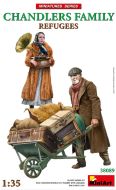 Miniart 1/35 Refugees Chandlers Family # 38089Special Price £12.59 was £13.99 Save 10%
Miniart 1/35 Refugees Chandlers Family # 38089Special Price £12.59 was £13.99 Save 10% -
 Miniart 1/35 Holidaymakers # 38087Special Price £12.59 was £13.99 Save 10%
Miniart 1/35 Holidaymakers # 38087Special Price £12.59 was £13.99 Save 10% -
 Miniart 1/35 German Elite Gun Crew # 35467Special Price £12.59 was £13.99 Save 10%
Miniart 1/35 German Elite Gun Crew # 35467Special Price £12.59 was £13.99 Save 10% -
 Miniart 1/35 3t Cargo Truck 3,6-36S Early Prod PmQ-Type # 35445Special Price £47.69 was £52.99 Save 10%
Miniart 1/35 3t Cargo Truck 3,6-36S Early Prod PmQ-Type # 35445Special Price £47.69 was £52.99 Save 10% -
 Miniart 1/35 Sd.Kfz. 234/4 Schwerer Panzerspahwagen 7.5 # 35427Special Price £67.49 was £74.99 Save 10%
Miniart 1/35 Sd.Kfz. 234/4 Schwerer Panzerspahwagen 7.5 # 35427Special Price £67.49 was £74.99 Save 10% -
 Miniart 1/35 Modern Cafe Visitors Set 1 # 38085Special Price £12.59 was £13.99 Save 10%
Miniart 1/35 Modern Cafe Visitors Set 1 # 38085Special Price £12.59 was £13.99 Save 10% -
 Miniart 1/35 3t Cargo Truck, 3,6-36S Pritsche Normal Type # 38079Special Price £47.69 was £52.99 Save 10%
Miniart 1/35 3t Cargo Truck, 3,6-36S Pritsche Normal Type # 38079Special Price £47.69 was £52.99 Save 10% -
 Miniart 1/35 Sd.Kfz.234/2 Puma # 35419Special Price £49.49 was £54.99 Save 10%
Miniart 1/35 Sd.Kfz.234/2 Puma # 35419Special Price £49.49 was £54.99 Save 10% -
 Miniart 1/35 Sd.Kfz.234/2 Puma Interior Kit # 35414Special Price £65.69 was £72.99 Save 10%
Miniart 1/35 Sd.Kfz.234/2 Puma Interior Kit # 35414Special Price £65.69 was £72.99 Save 10% -
 Miniart 1/35 M3 Stuart Early Prod, Interior Kit # 35404Special Price £58.49 was £64.99 Save 10%
Miniart 1/35 M3 Stuart Early Prod, Interior Kit # 35404Special Price £58.49 was £64.99 Save 10% -
 Miniart 1/35 K-51 Radio Truck w/ Trailer # 37062Special Price £58.49 was £64.99 Save 10%
Miniart 1/35 K-51 Radio Truck w/ Trailer # 37062Special Price £58.49 was £64.99 Save 10% -
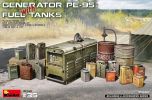 Miniart 1/35 Generator PE-95 with Fuel Tanks # 35662Special Price £17.09 was £18.99 Save 10%
Miniart 1/35 Generator PE-95 with Fuel Tanks # 35662Special Price £17.09 was £18.99 Save 10% -
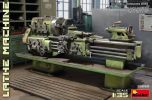 Miniart 1/35 Lathe Machine # 35660Special Price £17.09 was £18.99 Save 10%
Miniart 1/35 Lathe Machine # 35660Special Price £17.09 was £18.99 Save 10% -
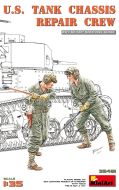 Miniart 1/35 US Tank Chassis Repair Crew # 35481Special Price £12.59 was £13.99 Save 10%
Miniart 1/35 US Tank Chassis Repair Crew # 35481Special Price £12.59 was £13.99 Save 10% -
 Miniart 1/35 3t Cargo Truck 3,6-36S Pritsche Normal Type # 35442Special Price £47.69 was £52.99 Save 10%
Miniart 1/35 3t Cargo Truck 3,6-36S Pritsche Normal Type # 35442Special Price £47.69 was £52.99 Save 10% -
 Miniart 1/35 German 7.5cm PaK 40 Mid w/ Artillery Crew # 35400Special Price £26.99 was £29.99 Save 10%
Miniart 1/35 German 7.5cm PaK 40 Mid w/ Artillery Crew # 35400Special Price £26.99 was £29.99 Save 10% -
 MiniArt 1/35 Tempo A400 Lieferwagen, Bakery Van # 38066Special Price £38.69 was £42.99 Save 10%
MiniArt 1/35 Tempo A400 Lieferwagen, Bakery Van # 38066Special Price £38.69 was £42.99 Save 10% -
 MiniArt 1/35 Iraqi T-55 Al Faw/Enigma Soviet Made Base # 37095Special Price £67.49 was £74.99 Save 10%
MiniArt 1/35 Iraqi T-55 Al Faw/Enigma Soviet Made Base # 37095Special Price £67.49 was £74.99 Save 10% -
 MiniArt 1/35 Panzer Crew 1943-1945 # 35465Special Price £12.59 was £13.99 Save 10%
MiniArt 1/35 Panzer Crew 1943-1945 # 35465Special Price £12.59 was £13.99 Save 10% -
 MiniArt 1/35 M3 Stuart Light Tank, Initial Prod # 35425Special Price £47.69 was £52.99 Save 10%
MiniArt 1/35 M3 Stuart Light Tank, Initial Prod # 35425Special Price £47.69 was £52.99 Save 10% -
 Miniart 1/35 Refugees Chandlers Family # 38089Special Price £12.59 was £13.99 Save 10%
Miniart 1/35 Refugees Chandlers Family # 38089Special Price £12.59 was £13.99 Save 10% -
 Miniart 1/35 Holidaymakers # 38087Special Price £12.59 was £13.99 Save 10%
Miniart 1/35 Holidaymakers # 38087Special Price £12.59 was £13.99 Save 10% -
 Miniart 1/35 German Elite Gun Crew # 35467Special Price £12.59 was £13.99 Save 10%
Miniart 1/35 German Elite Gun Crew # 35467Special Price £12.59 was £13.99 Save 10% -
 Miniart 1/35 3t Cargo Truck 3,6-36S Early Prod PmQ-Type # 35445Special Price £47.69 was £52.99 Save 10%
Miniart 1/35 3t Cargo Truck 3,6-36S Early Prod PmQ-Type # 35445Special Price £47.69 was £52.99 Save 10% -
 Miniart 1/35 Sd.Kfz. 234/4 Schwerer Panzerspahwagen 7.5 # 35427Special Price £67.49 was £74.99 Save 10%
Miniart 1/35 Sd.Kfz. 234/4 Schwerer Panzerspahwagen 7.5 # 35427Special Price £67.49 was £74.99 Save 10% -
 Miniart 1/35 Modern Cafe Visitors Set 1 # 38085Special Price £12.59 was £13.99 Save 10%
Miniart 1/35 Modern Cafe Visitors Set 1 # 38085Special Price £12.59 was £13.99 Save 10% -
 Miniart 1/35 3t Cargo Truck, 3,6-36S Pritsche Normal Type # 38079Special Price £47.69 was £52.99 Save 10%
Miniart 1/35 3t Cargo Truck, 3,6-36S Pritsche Normal Type # 38079Special Price £47.69 was £52.99 Save 10% -
 Miniart 1/35 Sd.Kfz.234/2 Puma # 35419Special Price £49.49 was £54.99 Save 10%
Miniart 1/35 Sd.Kfz.234/2 Puma # 35419Special Price £49.49 was £54.99 Save 10% -
 Miniart 1/35 Sd.Kfz.234/2 Puma Interior Kit # 35414Special Price £65.69 was £72.99 Save 10%
Miniart 1/35 Sd.Kfz.234/2 Puma Interior Kit # 35414Special Price £65.69 was £72.99 Save 10% -
 Miniart 1/35 M3 Stuart Early Prod, Interior Kit # 35404Special Price £58.49 was £64.99 Save 10%
Miniart 1/35 M3 Stuart Early Prod, Interior Kit # 35404Special Price £58.49 was £64.99 Save 10% -
 Miniart 1/35 K-51 Radio Truck w/ Trailer # 37062Special Price £58.49 was £64.99 Save 10%
Miniart 1/35 K-51 Radio Truck w/ Trailer # 37062Special Price £58.49 was £64.99 Save 10% -
 Miniart 1/35 Generator PE-95 with Fuel Tanks # 35662Special Price £17.09 was £18.99 Save 10%
Miniart 1/35 Generator PE-95 with Fuel Tanks # 35662Special Price £17.09 was £18.99 Save 10% -
 Miniart 1/35 Lathe Machine # 35660Special Price £17.09 was £18.99 Save 10%
Miniart 1/35 Lathe Machine # 35660Special Price £17.09 was £18.99 Save 10% -
 Miniart 1/35 US Tank Chassis Repair Crew # 35481Special Price £12.59 was £13.99 Save 10%
Miniart 1/35 US Tank Chassis Repair Crew # 35481Special Price £12.59 was £13.99 Save 10% -
 Miniart 1/35 3t Cargo Truck 3,6-36S Pritsche Normal Type # 35442Special Price £47.69 was £52.99 Save 10%
Miniart 1/35 3t Cargo Truck 3,6-36S Pritsche Normal Type # 35442Special Price £47.69 was £52.99 Save 10% -
 Miniart 1/35 German 7.5cm PaK 40 Mid w/ Artillery Crew # 35400Special Price £26.99 was £29.99 Save 10%
Miniart 1/35 German 7.5cm PaK 40 Mid w/ Artillery Crew # 35400Special Price £26.99 was £29.99 Save 10% -
 MiniArt 1/35 Tempo A400 Lieferwagen, Bakery Van # 38066Special Price £38.69 was £42.99 Save 10%
MiniArt 1/35 Tempo A400 Lieferwagen, Bakery Van # 38066Special Price £38.69 was £42.99 Save 10% -
 MiniArt 1/35 Iraqi T-55 Al Faw/Enigma Soviet Made Base # 37095Special Price £67.49 was £74.99 Save 10%
MiniArt 1/35 Iraqi T-55 Al Faw/Enigma Soviet Made Base # 37095Special Price £67.49 was £74.99 Save 10% -
 MiniArt 1/35 Panzer Crew 1943-1945 # 35465Special Price £12.59 was £13.99 Save 10%
MiniArt 1/35 Panzer Crew 1943-1945 # 35465Special Price £12.59 was £13.99 Save 10% -
 MiniArt 1/35 M3 Stuart Light Tank, Initial Prod # 35425Special Price £47.69 was £52.99 Save 10%
MiniArt 1/35 M3 Stuart Light Tank, Initial Prod # 35425Special Price £47.69 was £52.99 Save 10% -
 Miniart 1/35 Refugees Chandlers Family # 38089Special Price £12.59 was £13.99 Save 10%
Miniart 1/35 Refugees Chandlers Family # 38089Special Price £12.59 was £13.99 Save 10%


























